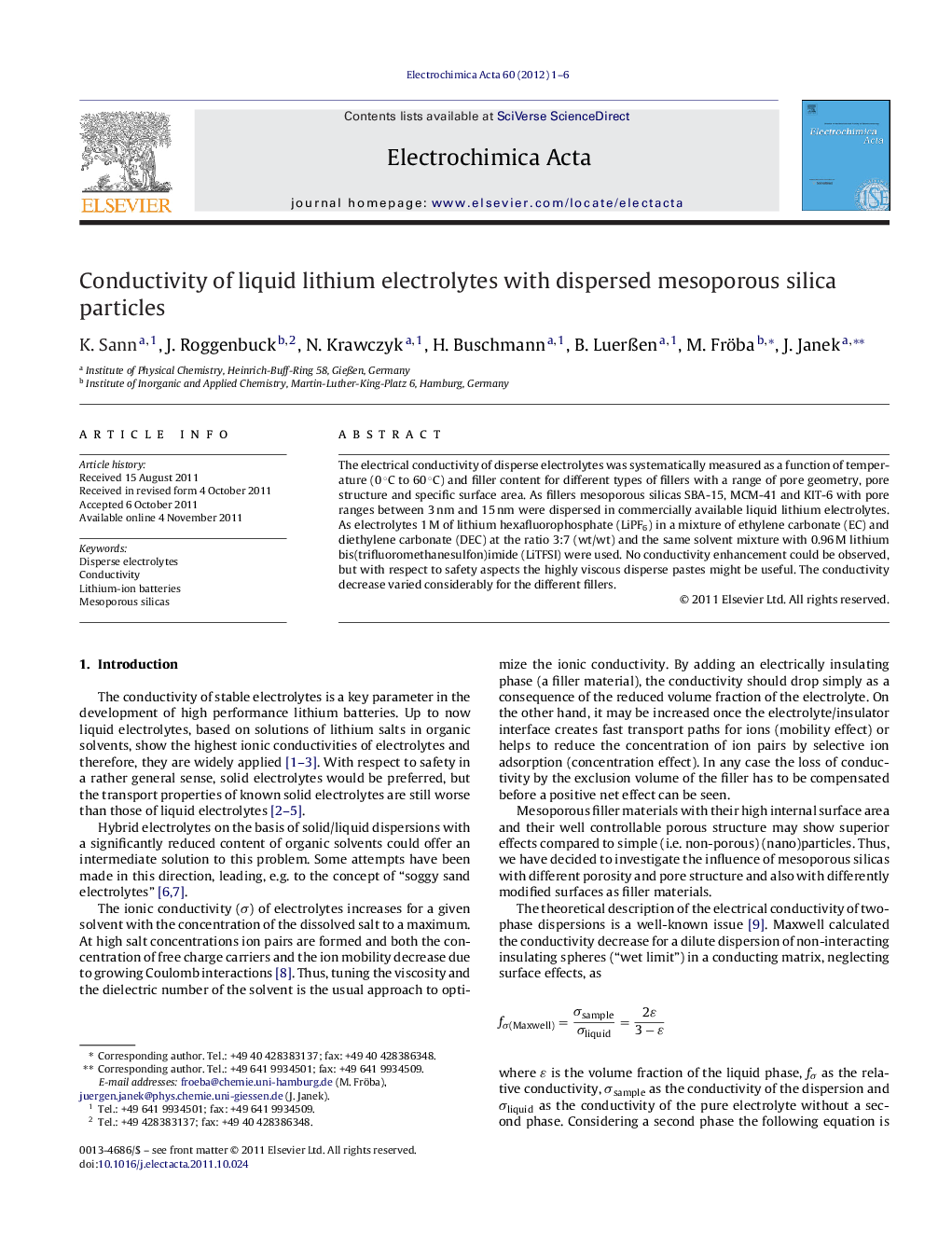| Article ID | Journal | Published Year | Pages | File Type |
|---|---|---|---|---|
| 188950 | Electrochimica Acta | 2012 | 6 Pages |
The electrical conductivity of disperse electrolytes was systematically measured as a function of temperature (0 °C to 60 °C) and filler content for different types of fillers with a range of pore geometry, pore structure and specific surface area. As fillers mesoporous silicas SBA-15, MCM-41 and KIT-6 with pore ranges between 3 nm and 15 nm were dispersed in commercially available liquid lithium electrolytes. As electrolytes 1 M of lithium hexafluorophosphate (LiPF6) in a mixture of ethylene carbonate (EC) and diethylene carbonate (DEC) at the ratio 3:7 (wt/wt) and the same solvent mixture with 0.96 M lithium bis(trifluoromethanesulfon)imide (LiTFSI) were used. No conductivity enhancement could be observed, but with respect to safety aspects the highly viscous disperse pastes might be useful. The conductivity decrease varied considerably for the different fillers.
► The conductivity of disperse lithium electrolytes with mesoporous fillers is studied. ► In contrast to other investigations in literature, no conductivity enhancement could be observed for standard battery electrolytes and typical mesoporous fillers in various combinations. ► Disperse electrolytes can become relevant in terms of battery safety. ► Dispersions of silicas and electrolyte with LiPF6 as conducting salt are not stable, although the silicas were dried prior to preparation and the electrolyte water content was controlled. Surface modification of the fillers improved the stability. ► The observed conductivity decrease varied considerably for various fillers.
